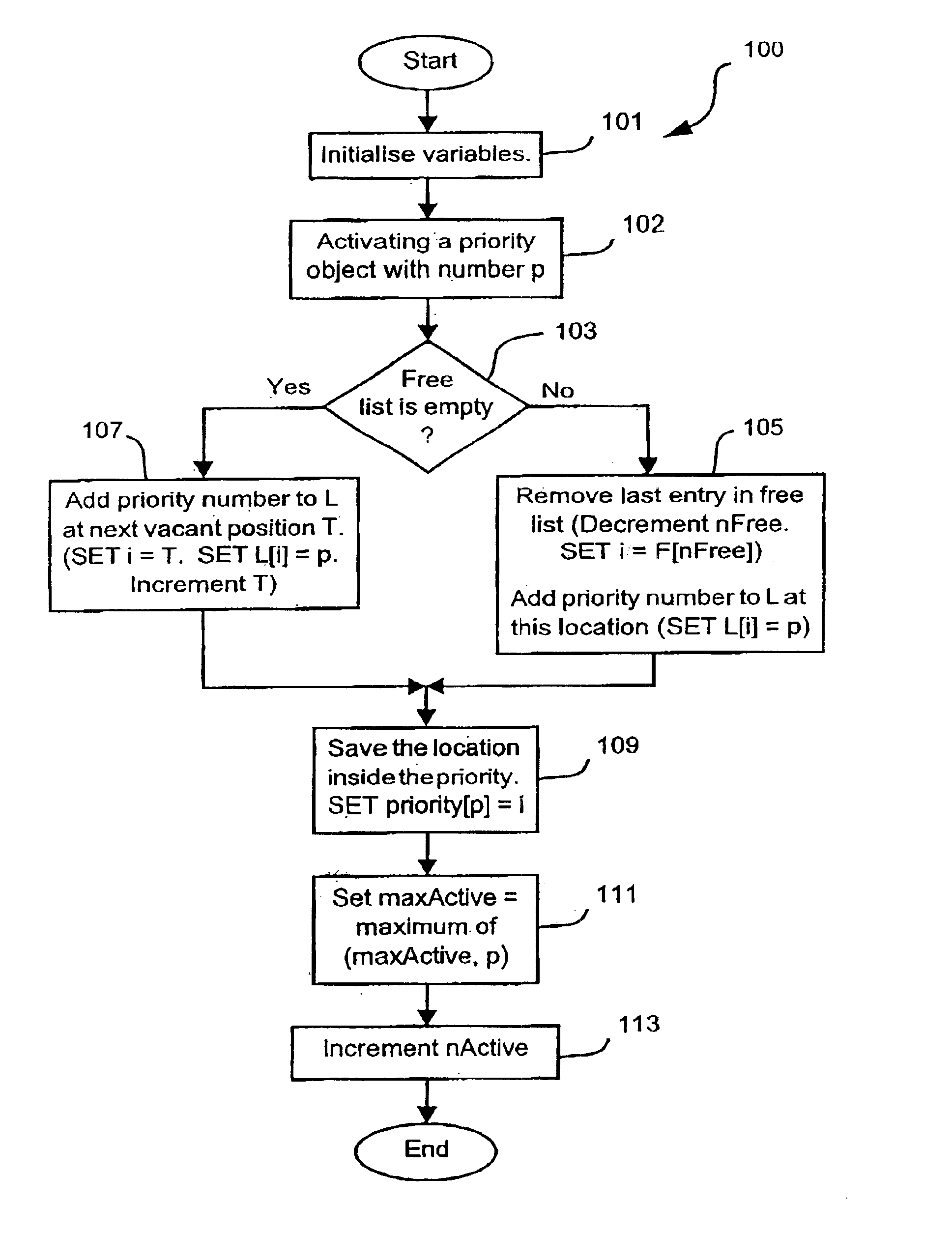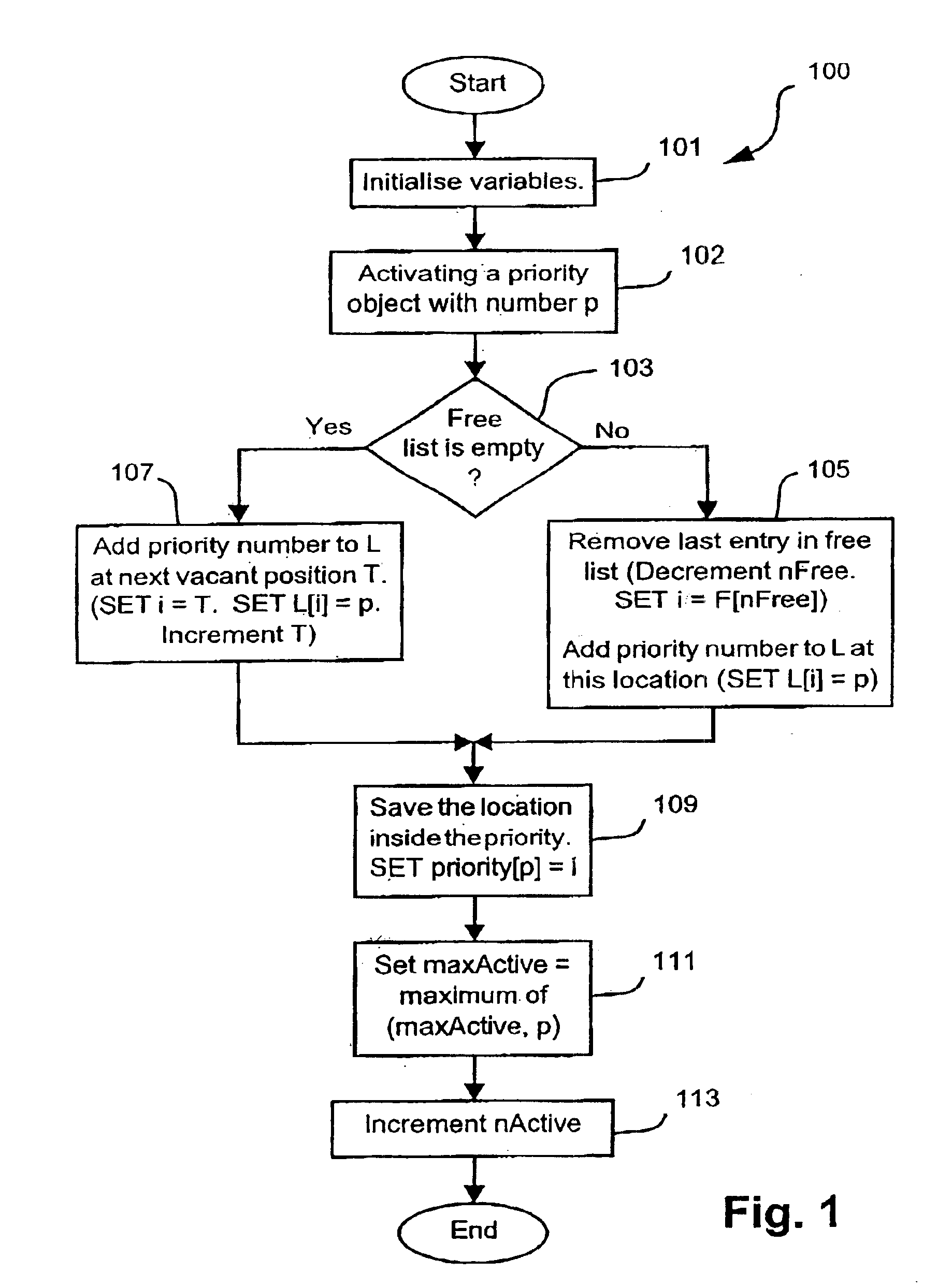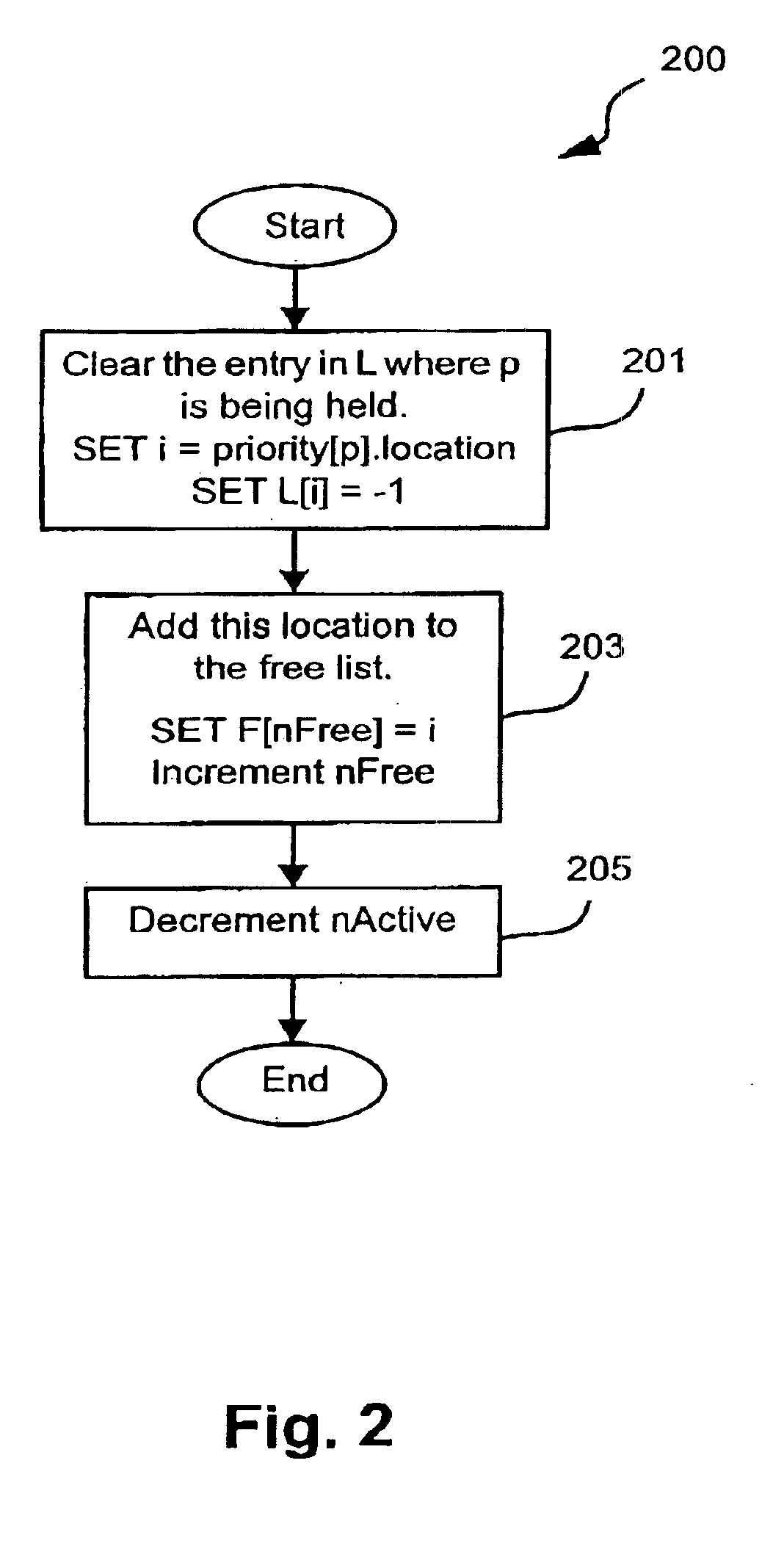Method of determining active priorities
a priority and active technology, applied in the field of computer graphics, can solve the problems of inefficiency of removing an object and associated priority value from a sorted priority list, deteriorating method performance, and inability to improve the method of marking objects
- Summary
- Abstract
- Description
- Claims
- Application Information
AI Technical Summary
Benefits of technology
Problems solved by technology
Method used
Image
Examples
Embodiment Construction
[0079]Where reference is made in any one or more of the accompanying drawings to steps and / or features, which have the same reference numerals, those steps and / or features have for the purposes of this description the same function(s) or operation(s), unless the contrary intention appears.
[0080]FIG. 3 is a flow diagram showing a method 300 of determining active objects contributing to a run of pixels corresponding to a scanline. The method 300 is preferably practiced using a general-purpose computer system 1000, such as that shown in FIG. 10 wherein the described method 300 can be implemented as software, such as an application program executing within the computer system 1000. In particular, the steps of the described method 300 are effected by instructions in the software that are carried out by a processor 1005 of the computer system 1000. The instructions may be formed as one or more code modules, each for performing one or more particular tasks. The software may also be divided...
PUM
 Login to View More
Login to View More Abstract
Description
Claims
Application Information
 Login to View More
Login to View More - R&D
- Intellectual Property
- Life Sciences
- Materials
- Tech Scout
- Unparalleled Data Quality
- Higher Quality Content
- 60% Fewer Hallucinations
Browse by: Latest US Patents, China's latest patents, Technical Efficacy Thesaurus, Application Domain, Technology Topic, Popular Technical Reports.
© 2025 PatSnap. All rights reserved.Legal|Privacy policy|Modern Slavery Act Transparency Statement|Sitemap|About US| Contact US: help@patsnap.com



